During the eleven hour flight to Buenos Aires I thought to myself, this place isn’t on the way anywhere. Then I was embarrassed at such a north-centered notion. But it was more true than I expected. The Portenos I met while visiting my sister in their city were all amazed that we were there at all: what brought you here?, they would ask, over and over. My sister, Christina Olsen, had a month-long residency as a visiting scholar at the Museo Moderno’s Casa Alberto Heredia. Over the course of my week there, we encountered few other American tourists. The people who stopped in Buenos Aires and continued on were going to hike Patagonia or cruise to Antartica. From my (northeastern) perspective, this was the definition of “remote.”
It’s summer there now, which was harder than I thought to comprehend. I could handle the heat. It’s warm now in the Caribbean, for example, but still winter. In Argentina, it’s summer vacation. The north is hotter, the south colder. I was thoroughly turned around. I had never been to South America. I knew no Spanish and shamefully little about Latin American history. Maybe I had been further south when I was in Queenstown, New Zealand, but that had been, also confusingly, a winter in July. This felt more disorienting. I spent the week as an utter newbie, flailing around and literally tripping in a doorway once. It’s humbling and heartening to be like a child again. It was overwhelming and invigorating.
Some impressions.
The neighborhoods: San Telmo, with its crumbling colonial architecture, is a gem. It’s modest and bohemian compared to some of the fancier neighborhoods to the north, where residents fled during a yellow fever epidemic in the 1870s. The national cemetery in Recoleta, dating from 1822, is a micro-city itself, a miniaturized history of the evolving nation. The tombs pile on top of each other from every era in a jumble of pathos. Some are adorned with fresh flowers and some are full of broken glass. Some have staircases leading into the ground and as many as eighty interments inside.
The bookstores: El Ateneo Grand Splendid, with its miles of books in a converted movie theater, is over-rated, but the city is sprinkled with lovely old bookstores with vintage volumes on display. We took refuge from a downpour in one and I was tempted by several original issues of the avant-garde literary magazine Sur.
The murals: Street art is everywhere— popping with color, and covering private houses as well as businesses and public spaces. Subway stations are filled with mosaics and bright green tile.
The artists: I tagged along with my sister to visit several artists in their studios. We met Fernanda Laguna in her shop-like space, crowded with the toys and objects. We met Marcela Astorga in her spare garden studio to admire installations made of leather and horsehair. We met Alicia Herrero in her sky-lit apartment, filled with huge brightly-colored abstract canvases. We were often late, crisscrossing the city in taxis and buses, and hungry, being too booked to fit in lunch. Everyone was welcoming and generous with their time.
The museums: We visited the shiny new-ish Museo de Arte Latinamericano de Buenos Aries (MALBA) and the old-fashioned National History Museum, the sprawling riverfront installations at the Parque de la Memoria, which honor the 30,000 desaparecidos killed during the military dictatorship, and the industrial spaces of PROA, which is under renovation. We met the founders of a new independent gallery called Pu Chi Pu Li. The phrase means “not too familiar, not too distant,” which seems like some sort of statement about Buenos Aires itself. We stumbled on the Centro Cultural Borges, improbably (or appropriately?) located on the top floor of a shopping mall. It comprised a series of interesting exhibits with no discernible tie to Borges.
But our geographic and conceptual home base was the Museo Moderno, in San Telmo. This year all of its exhibits revolve around the idea that “art is education.” One exhibit looked at how art has been taught in different school settings. Another created an aesthetic space for learning, an “ofrenda” for our senses. Another examined the museum’s own exhibition history to learn more about how their mission evolved. Learning and teaching were always interchangeable, and examined from new angles. A major theme of my whole trip was the immersive learning that’s possible in a place that’s entirely new. All my impressions were firsts— and intense.
I am purposefully not showing the artist’s studios or saying much about my time with my sister, whom I would admire deeply even if I didn’t love her so. Those experiences are not only mine to share. But some of the private moments can be captured obliquely. When we left Fernanda Laguna’s studio she insisted on giving both me and my sister gifts. Laguna cultivates an ethic of generosity in her life and work—for example, facilitating community art projects with people in a rural village called Fiorito. Next month she will open a pop-up restaurant there for people who have never been to a restaurant. She’ll hire local people, feed them for free, and make an aesthetic event of it. In her studio she keeps a bowl of tiny figurines that she hand-painted on some sort of seed. Hers was my first artist visit and I hadn’t even brought a notebook, but I left with a symbolic googly-eyed gift, cracked open.
Have you been to Argentina, or elsewhere in the Southern hemisphere? What were your impressions? I am very grateful I had this opportunity, and thank my sister and her hosts for the chance to tag along and listen in. Thanks too to Richard Shpuntoff for the cemetery tour and his encyclopedic knowledge of the city.

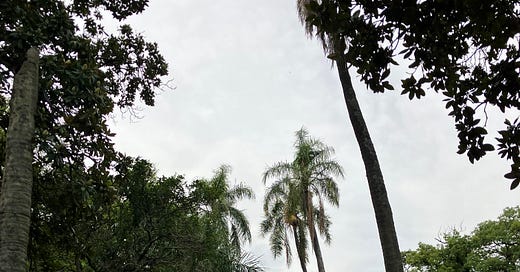




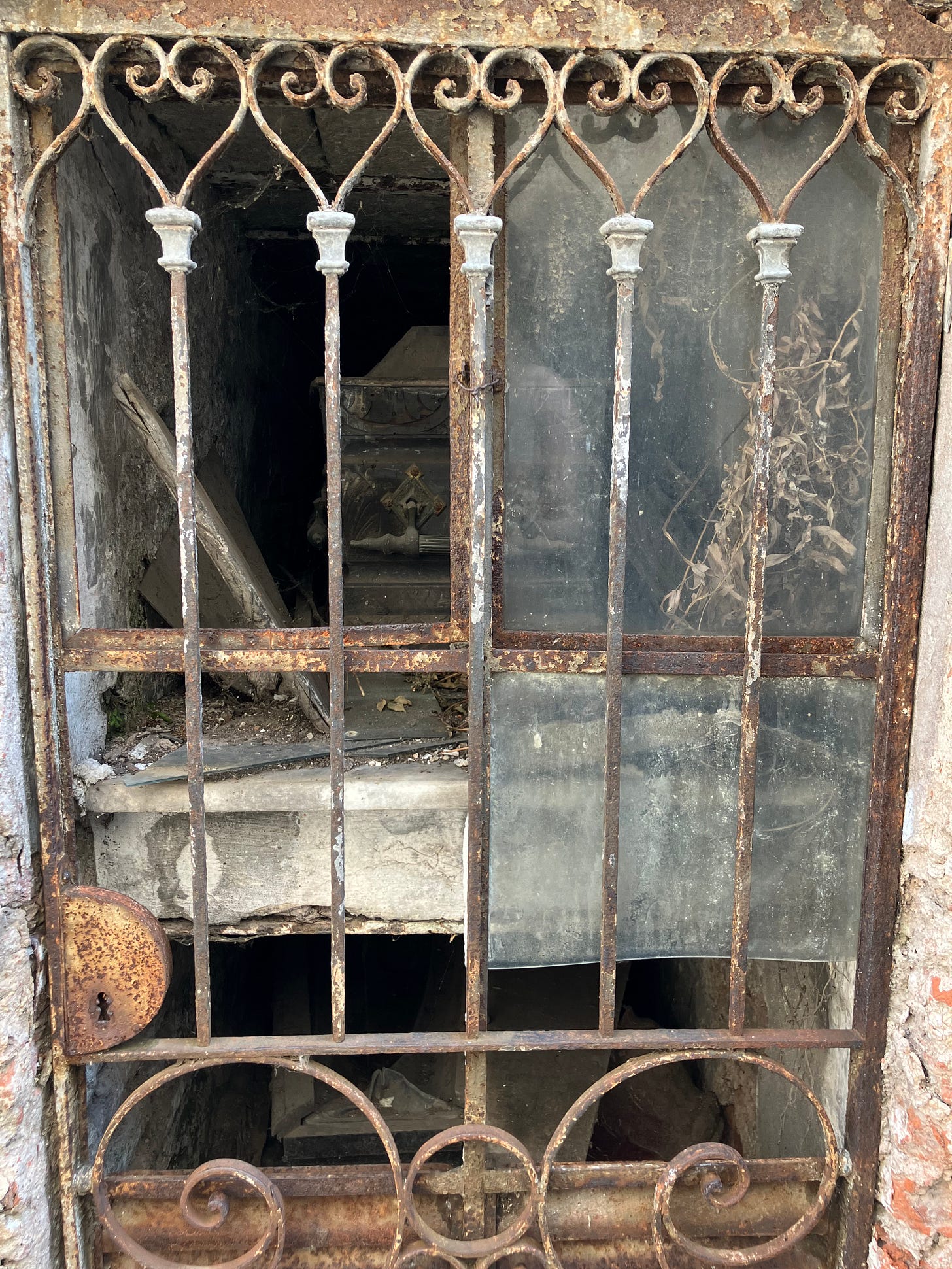

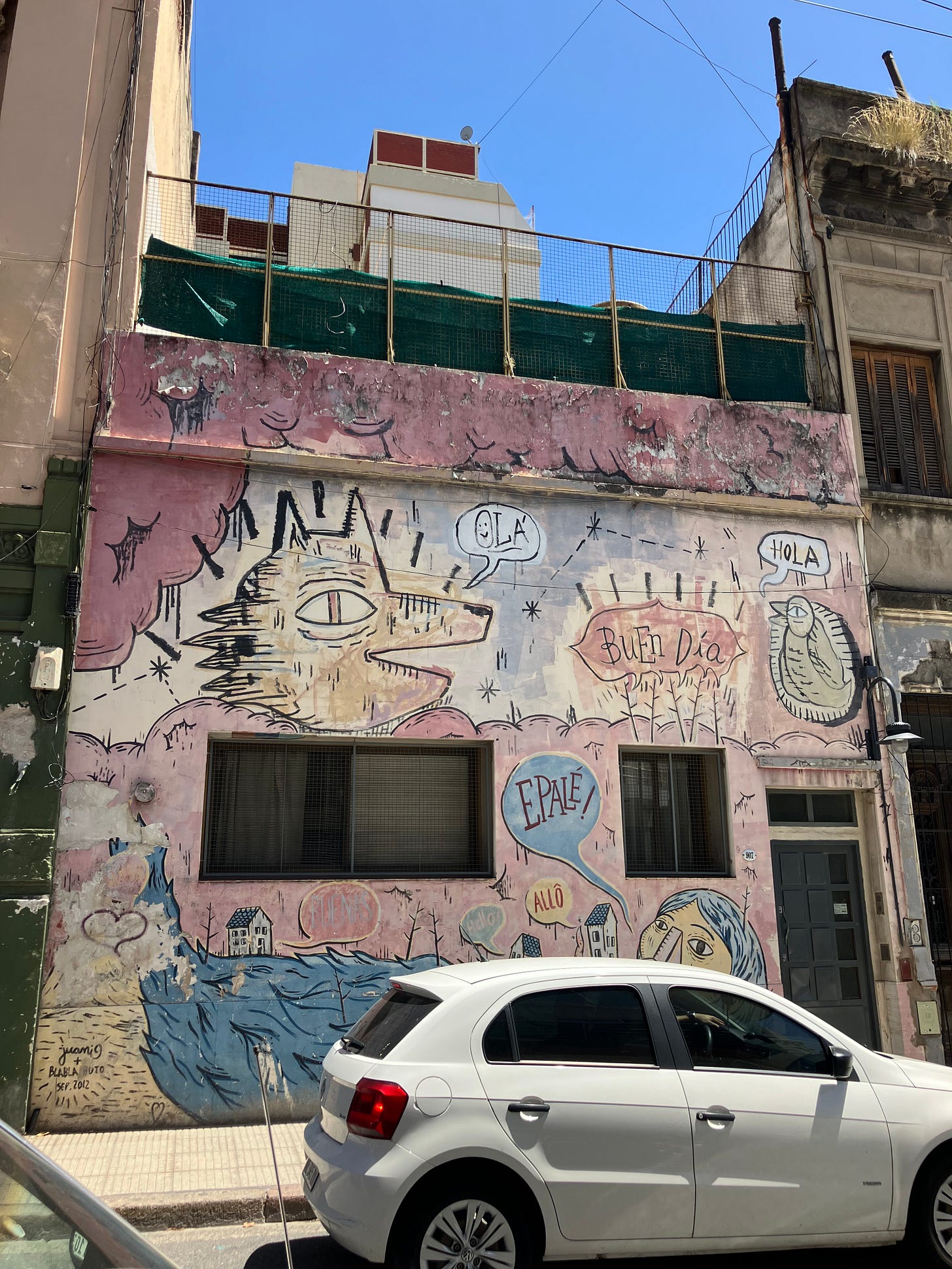
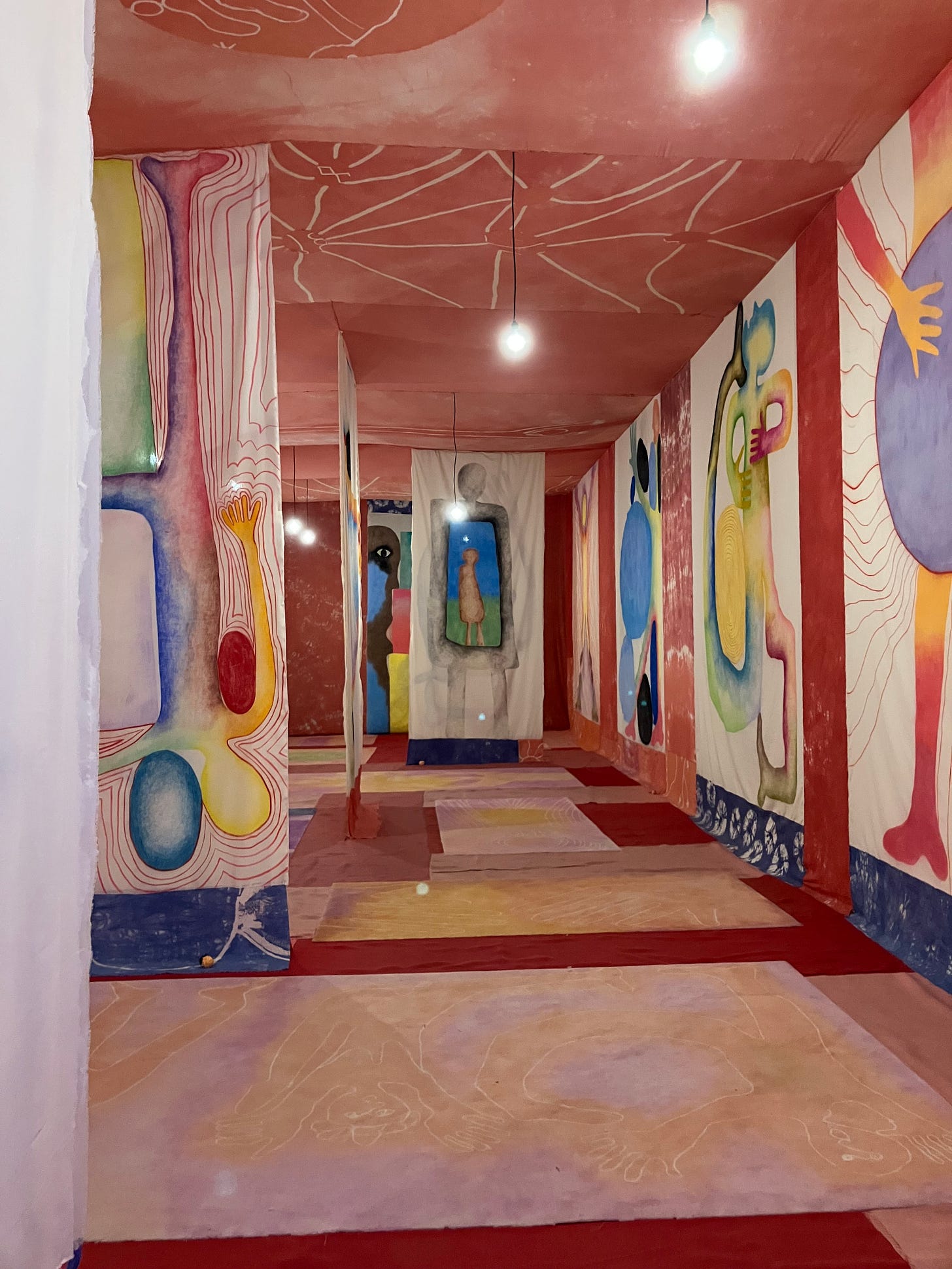
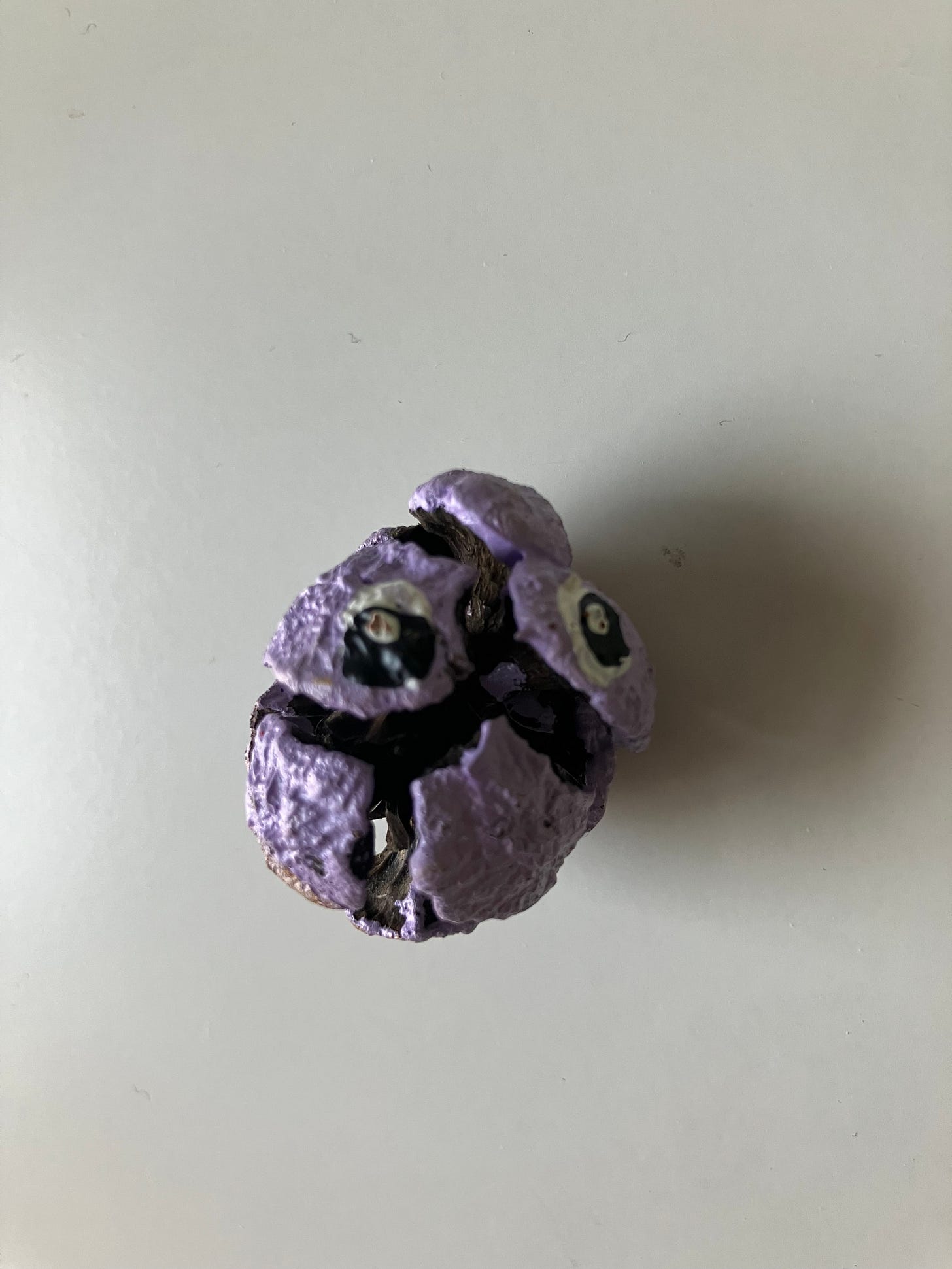
Wonderful! I'd like to be in the "Ofrenda" most of all -- what color & playful design.
Looks like a great trip! I’m enthralled that street art extends to private houses..